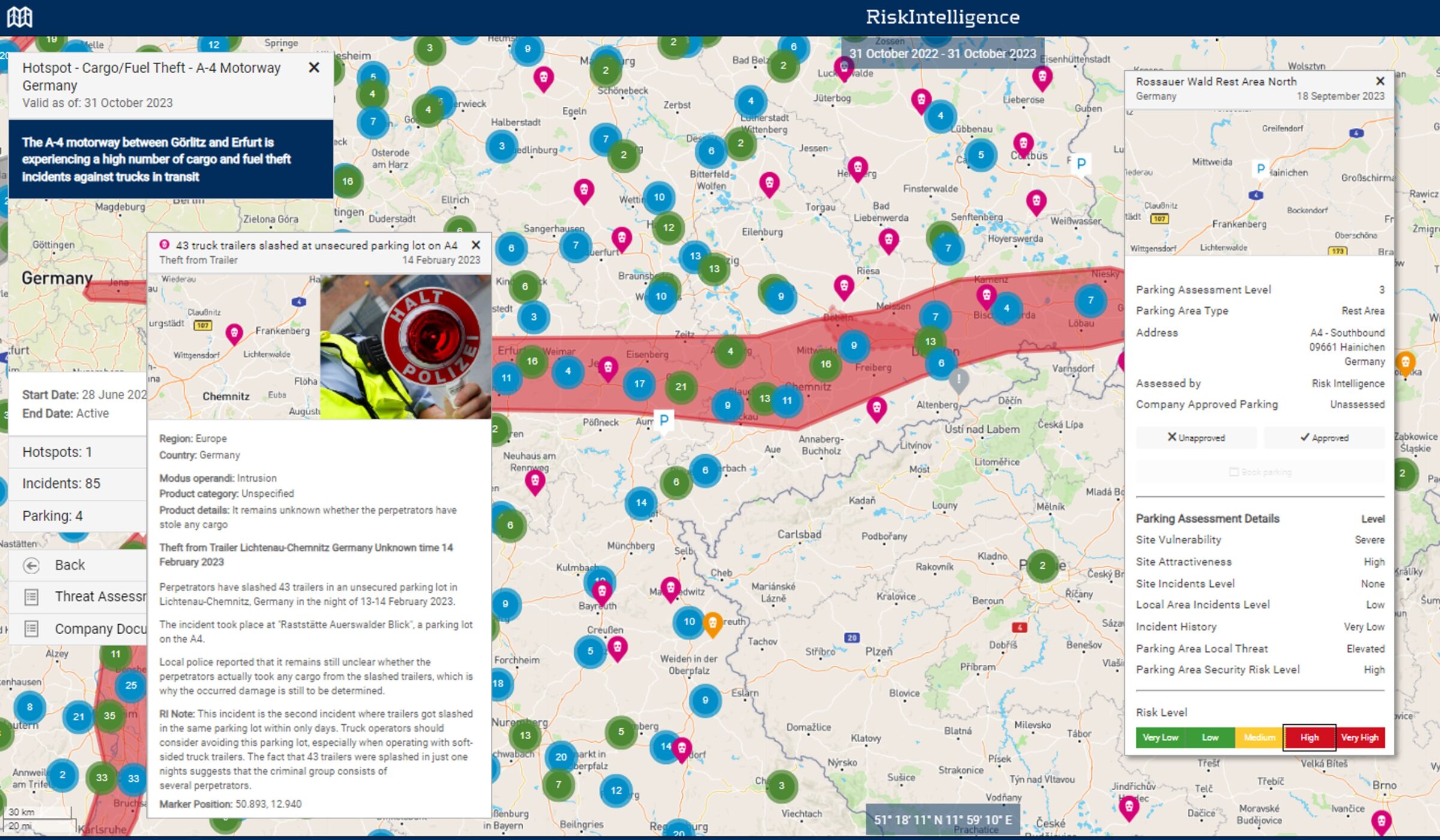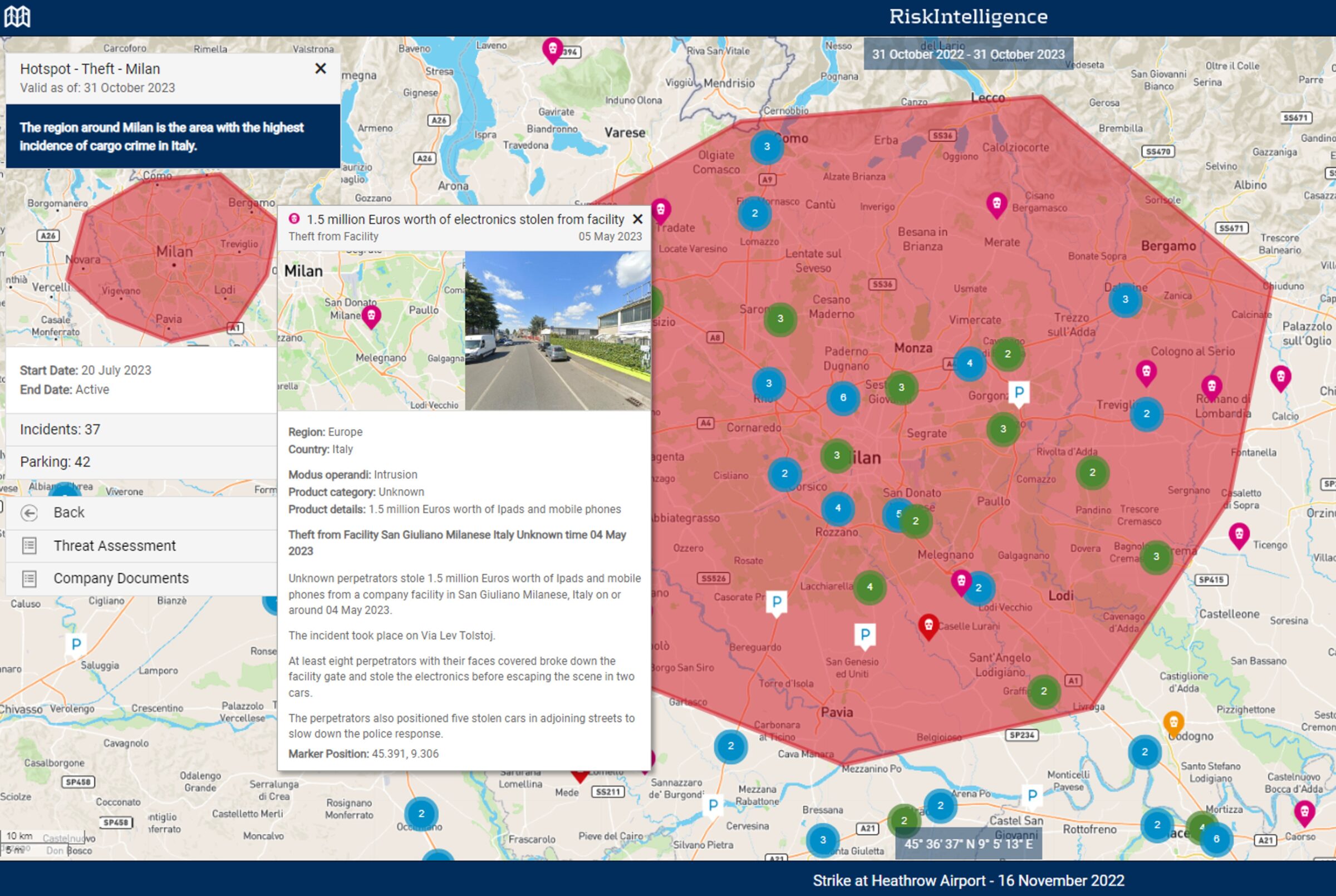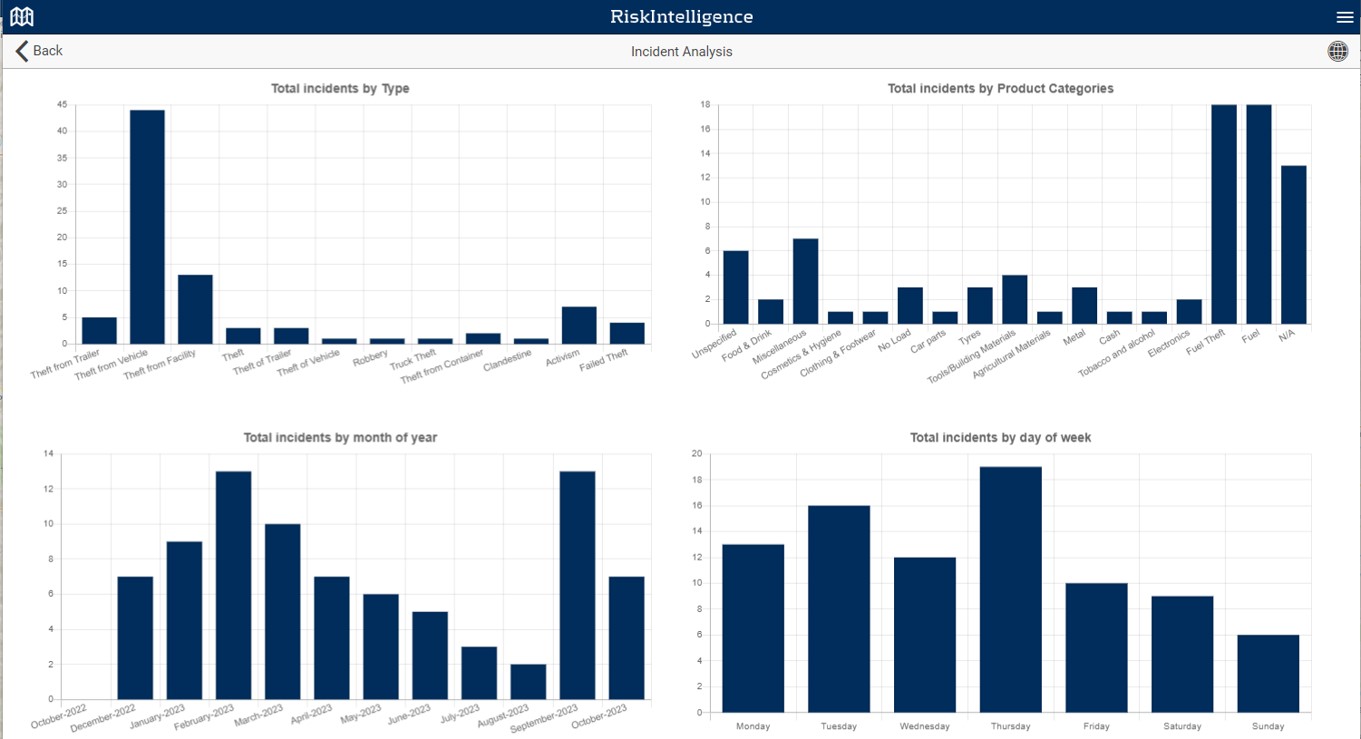
Reducing Supply Chain Risks at Cargo Crime ‘Hotspots’
TAPA EMEA 2023 PREMIER PARTNER ADVERTORIAL
Theft remains a major threat to the global supply chain and poses a significant risk to the reputation and bottom line of companies if a truck falls victim to cargo theft. The industry is striving hard to address this challenge by developing a wide array of preventive technologies and tools, establishing solid security standards, and working on increasing awareness through discussions, publications and training. However, two issues that hamper these efforts are the lack of secure truck parking and limited security budgets within transport companies due to the highly competitive logistics market.
The gold standard for security of trucks in transit is to implement the TAPA TSR standard and use secure truck parking areas, ideally sites certified to the TAPA PSR or EU SSTPA standard. This may not be possible in all situations due to a lack of secure parking on certain logistics routes and commercial constraints that prevent companies certifying an entire truck fleet to the TSR standard. This leaves companies vulnerable to cargo theft.
‘There are no shortcuts to security but when implementing the gold standard is not possible, intelligence led security risk management can still reduce the risk of cargo theft when travelling on high risk routes.’
Intelligence can help fill this gap. Access to reliable incident data, dynamic updates on cargo theft hotspots, other emerging threats and an analysis of individual truck parking area vulnerabilities can help logistics operators make best use of limited security resources. There are no shortcuts to security but when implementing the gold standard is not possible, intelligence led security risk management can still reduce the risk of cargo theft when travelling on high risk routes.
Understanding the local threat which is often specific and location dependent can provide insights into which physical, technological, or procedural mitigation measures may be most cost-effective in certain situations. Data within LandRisk Logistics clearly highlights that the type, characteristics and impact of incidents, as well as the motivations and modi operandi of cargo theft criminals varies throughout Europe.
In this article, we discuss two current European cargo theft hotspots to illustrate this dynamic threat picture and highlight the importance of staying informed on the most recent developments throughout your areas of operation.
Hotspot – Germany, A4

The A-4 motorway between Görlitz and Erfurt has been one of the most active European cargo crime hotspots in recent months, with 95 incidents recorded on LandRisk Logistics between November 2022 and November 2023 – 86 of which were categorised as cases of thefts or attempted thefts. Whilst there were some incidents in which facilities were targeted (16), theft from vehicles was the most common incident type (48).
Whilst the whole Görlitz-Erfurt corridor suffered from cargo theft incidents, a glance at our system will highlight the fact that cargo theft criminals have particularly targeted the western part of the route, with the area between Erfurt and Dresden witnessing the bulk of the incidents. What is certain, however, is that the vast majority of thefts took place whilst trucks were parked overnight at non-secure parking areas—including the Löbichau, Oberwald, Rabenstiner Wald, Auerswalder Blick, Rossauer Wald, Hainichen, Dresdner Tor and Rödertal rest areas, which all recorded at least one case of theft from vehicle since November 2022. Incidents tended to take place at the beginning of the week (with the majority occurring between Mondays and Thursdays). The criminals preferred to act at night , where often poorly lit rest areas make them less vulnerable to detection.
In this hotspot area criminals overwhelmingly used two main modi operandi. In 48% of incidents against vehicles tarpaulin slashing was used whereas 36% of incidents were achieved through some form of forced entry such as cutting through trailer cargo doors, locks or hatches to access cargo compartments. It is easy to understand the appeal of these strategies: they require limited tools, resources, personnel, information, or expertise to carry out and consequently, little effort on behalf of the offenders.
Most incidents were not focussed on larger-value goods. In fact, some of the most widely stolen commodities were food products, drinks and clothes, and the average value of theft incidents in this hotspot throughout the analysed period amounted to EUR 12,570—although a lack of systematic loss value reporting means that this value should only be seen as an indication and not the definite number.
Fortunately, only one case of robbery was recorded over the past twelve months, although the driver was physically assaulted during the incident Robberies such as this highlight the continuing threat of violent incidents, which although less likely, may result in a higher impact due to the potential risk of injury to the driver.
So how do we apply intelligence-led risk management to this hotspot? Knowledge of the threat and unique vulnerabilities of each parking area can help reduce the most prevalent, known risks as low as reasonably practical. All parking areas in this hotspot are assessed as high risk. If a truck is parked in a non-secure parking area prevention of cargo theft cannot be guaranteed but risks can still be reduced through deterrence, detection and response measures. The high incidence of trailer slashing incidents indicates that mitigating this threat may decrease risk exposure. By using hard-sided trailers, or trailer alarm systems as a minimum operators may avoid being the ‘soft target’ at a non-secure parking area as criminals are always looking for low effort targets. Robust locks available from various TAPA premiere partners may also deter criminals from targeting a truck. Trailer alarms and cargo tracking devices can aid in recovery if hard-sided trailers are breached and may reduce the impact of an incident.
Hotspot – Milan
The threat picture is somewhat different in the hotspot area of Milan. The most prevalent type of incident was theft from facility (41%). Whilst thefts from vehicles came a close second, most of these incidents took place within industrial estates (rather than motorway rest areas or services), with targeted trucks often parked within or in front of facility premises.

Additionally, whilst more opportunist, lower impact thefts did take place the evidence suggests that organised criminal groups (OCGs) are active in the Milan hotspot. OCGs were also prowling rest areas and services along the A-4 in our previous hotspot. However, the nature, scale and impact of incidents around Milan suggest that OCGs are a major threat and employ sophisticated techniques whilst methodically targeting trucks and facilities in industrial area for drastically higher rewards.
In contrast to the A-4 in Germany, in Milan, the most widely reported type of goods and materials stolen were electronics, tools, building materials, metal, clothing and footwear. The average loss value of incidents in this hotspot throughout the reporting period was EUR 397,000. Once again, whilst simple tarpaulin cutting and other intrusions into trailers remained the most common type of modi operandi, there was a high incidence of loaded truck theft. As was the case in the previous hotspot presented, offenders preferred to act at night with close to 72% of incidents taking place during the cover of darkness.
The threat within Milan and Germany also differed in that in this hotspot most incidents occurred close to or during the weekend. This is the situation context in play. Industrial estates are less likely to be busy at weekends. There are less facility staff, public and other truck drivers around who could act as capable crime mitigators or guardians to prevent or deter criminals from action. As the threat is different the mitigation measures must also be tailored to the threat. Facility operators are recommended to apply TAPA FSR protocols to reduce the risk of theft against their facilities. OCGs operating in Milan will operate quickly and efficiently , breaking into facilities in the knowledge that the alarm will activate but also confident that they can achieve their aim and escape before law enforcement can respond. This also suggests the possibility of insider collusion. Facility operators are recommended to review their incident response strategies as even a police response time of a few minutes may not be quick enough to stop a major theft from their facility.
Just-in-time logistics often results in drivers waiting outside delivery destinations in industrial areas overnight. Logistic operators are recommended to use intelligence to identify secure parking areas in the region and stop short for overnight stops and then complete the most hazardous, final part of the route in daylight or so that they arrive much closer to the delivery time.
‘Knowledge of the threat and unique vulnerabilities of each parking area can help reduce the most prevalent, known risks as low as reasonably practical.’
Conclusion
It is clear that the risk controls discussed will not eliminate but only reduce risk. However, a key tenant of risk management is that risk control measures must be cost effective. If the business model does not support implementation of the TSR or PSR standard for a particular shipment or facility or secure parking is unavailable operators can still be pro-active in reducing their risks by combating the most prevalent criminal modi operandi in the area to reduce their risk of cargo theft.



















